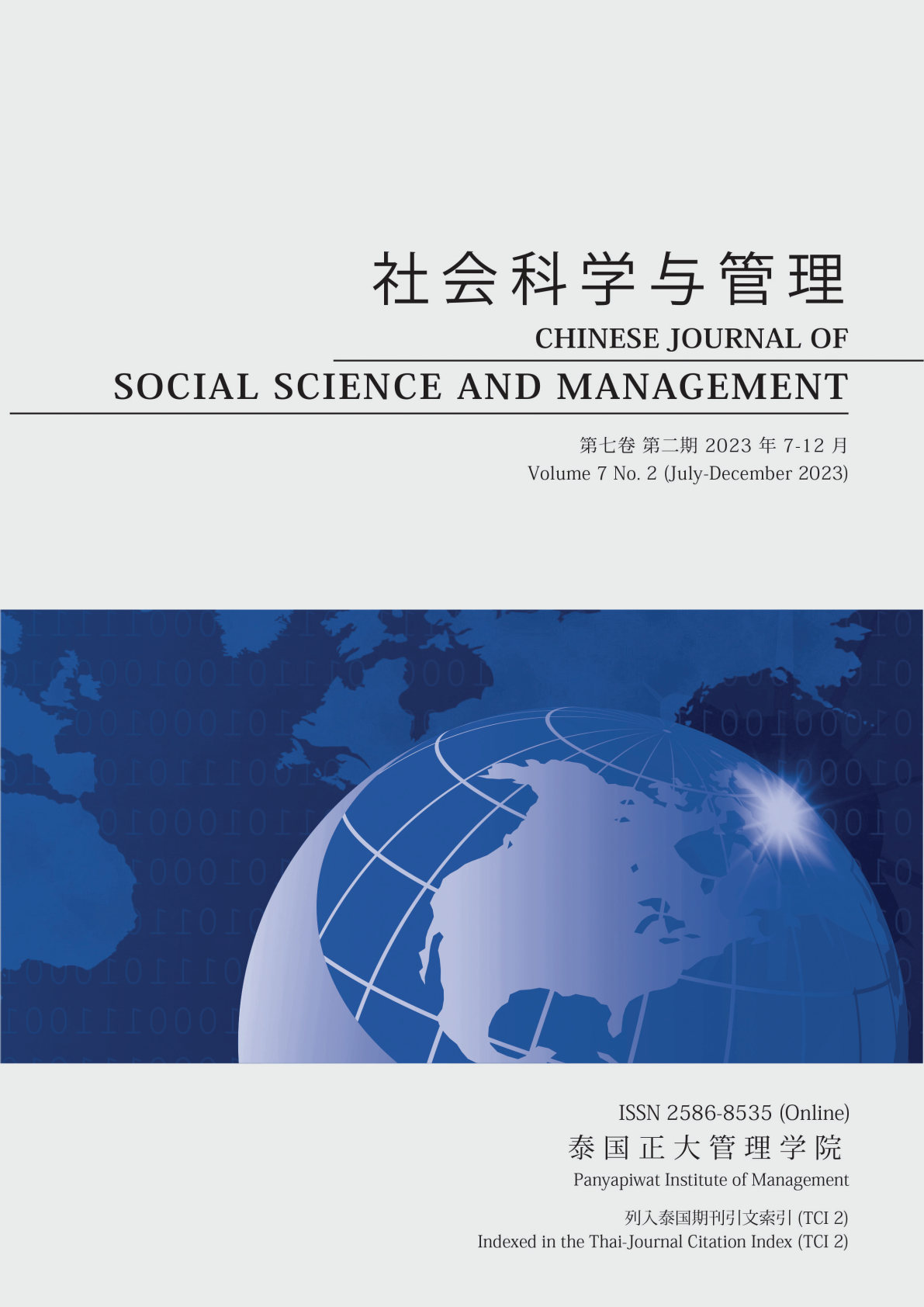THE DISTRIBUTION OF THE WORD “CU” IN MODERN CHINESE BASED ON THE QUALIA STRUCTURE THEORY
Main Article Content
Abstract
This paper takes the word “CU (粗)” as the research object, extracts sufficient corpus from the CCL corpus of Peking University, analyzes its sememe distribution in the real corpus and the prominent qualia roles of the corpus, and then according to the frequency of use, the semantic items of the word are reclassified and described. On the basis of the nine meanings in “Modern Chinese” (Seventh Edition), four new meanings were also found: “(surface) not smooth”, “courage, guts exceeding the routine or exceeding the object of comparison”, “breathing frequency and air volume exceeding the routine or exceeding the object of comparison” and “the style of the work or the character is bold and unconstrained”. In addition, according to the theory of qualia structure in the generative lexicon, the derivation relationship between the meaning items of “CU (粗)” is explained, which provides a new basis for the existing dictionary interpretation and optimizes some of the meaning items.
Article Details

This work is licensed under a Creative Commons Attribution-NonCommercial-NoDerivatives 4.0 International License.
Chinese Journal of Social Science and Management Editorial Division
The Office of Research and Development, Panyapiwat Institute of Management
85/1 Moo 2, Chaengwattana Rd., Bang Talat, Pakkred, Nonthaburi 11120, Thailand
Tel. 02 855 01048 E-mail: cjssm@pim.ac.th
References
Duan, Y. C. (1988). The Shuowen Jiezi Zhu. Shanghai Ancient Books Publishing House. [in Chinese] Li, Q. (2014). An analysis of noun metaphor based on qualia structure and conceptual integration. Language Teaching and Research, (6), 44-53. [in Chinese]
Li, S. C. (2013a). A corpus based study of the semantic Item distribution of the modern Chinese “Green”. Journal of Shanxi Datong University (Social Science Edition), 27(5), 62-66. [in Chinese]
Li, S. C. (2013b). A study on the distribution of 100 core words in Chinese English dictionaries. Journal of North China University (Social Sciences Edition), 14(6), 9-15. [in Chinese]
Li, Q., & Yuan, Y. L. (2019). The structural description and conceptual interpretation of nouns’ meaning from the perspective of generative lexicon theory. Linguistics, (1), 263-295. [in Chinese]
Quan, M. L. (2015). Chinese and Korean word contrast spatial dimensions-the “CU (粗) /XI (细)” and “굵다/가늘다” as the center [Master’s thesis]. Yanbian University. [in Chinese]
Ren, Y. J. (2000). Semantic analysis of spatial dimension words in modern Chinese [Master’s thesis]. Yanbian University. [in Chinese]
Song, Z. Y. (2015). Generative Lexicon theory and Chinese event-forcing phenomenon. Peking Univer-sity Press. [in Chinese]
Wei, L. C. (2016). A semantic and syntax comparison between Chinese and Japanese dimensional Adjectives of CU (粗) and XI (细). Journal of Xiamen University of Technology, 24(2), 66-71. [in Chinese]
Wu, Y. (2013). A study on the semantic system of the Chinese dimensional adjective “CU (粗)”. Journal of Hunan University of Science and Technology (Social Science Edition), 16(4), 169-172. [in Chinese]
Xu, S. (2013). Shuowen jiezi. Zhonghua Book Company. [in Chinese]
Yuan, Y. L. (2013). A study of Chinese semantic knowledge system based on the theory of Generative lexicon and argument structure. Journal of Chinese Informantion Prooessing, 27(6), 23-30. [in Chinese]
Yuan, Y. L. (2014). The description system and application cases of the qualia structure of Chinese Nouns. Contemporary Linguistics, 16(1), 31-48. [in Chinese]
Zhan, W., Guo, R., & Chen, Y. (2003). The CCL corpus of Chinese texts: 700 Million Chinese characters, the 11th Century B. C. - present. Center for Chinese Linguistics (abbreviated as CCL) of Peking University. http://ccl.pku.edu.cn:8080/ccl_corpus
Zhang, K. L., & Yu, P. F. (2013). Overview of learning dictionary compilation scenarios in developed countries (5)-Chinese dictionary compilation scenarios. Journal of Ludong University (Philosophy and Social Sciences Edition), 30(2), 56-63. [in Chinese]
Zhang, N. X., & Song, Z. Y. (2015). The semantic construction of Chinese formal noun compounds: Based on the theory of qualia structure and concept integration. Chinese Journal of Information Science, (6), 38-45. [in Chinese]
Zhang, X. S., & Zhang, A. L. (2009). Introduction to generative Lexicon theory. Contemporary Linguistics, 11(3), 267-271. [in Chinese]
Zhang, Y. H. (2004). Problems and countermeasures in the development of computational lexicology in my country. The Symposium on Dictionaries and Digitization 2, 5-9. [in Chinese]
Zhao, Q. Q., & Song, Z. Y. (2017). A study on disyllabic metaphorical noun-noun compounds in Chinese: Based on the generative lexicon theory. Chinese Journal of Information Science, 31(2), 11-17. [in Chinese]


